
Award for the John Cage Organ Art Project
There is no other art project like this in the entire world – in the centre of Halberstadt, within the solemn walls of the cloister of St Burchardi, the notes of the world’s slowest piece of music have been sounding since 5 September 2001. A musical memorial to the composer John Cage that has attracted international attention and was reported in the New York Times.
To mark the 15th chord change, a special honour was awarded this year: the founding dean of the Faculty of Administrative Sciences, Prof. Dr Rainer O. Neugebauer, received the Prize for Culture of the town of Halberstadt as one of the initiators of the project. The award was handed over by Mayor Daniel Szarata in person at the Cage House. State Secretary for Culture Sebastian Putz expressed the appreciation of the state government for his efforts. Prof. Dr Neugebauer accepted the award in the name of the John Cage Organ Foundation and donated the prize money of 250 euros to it; the much-acclaimed project requires support through donations in order to continue.
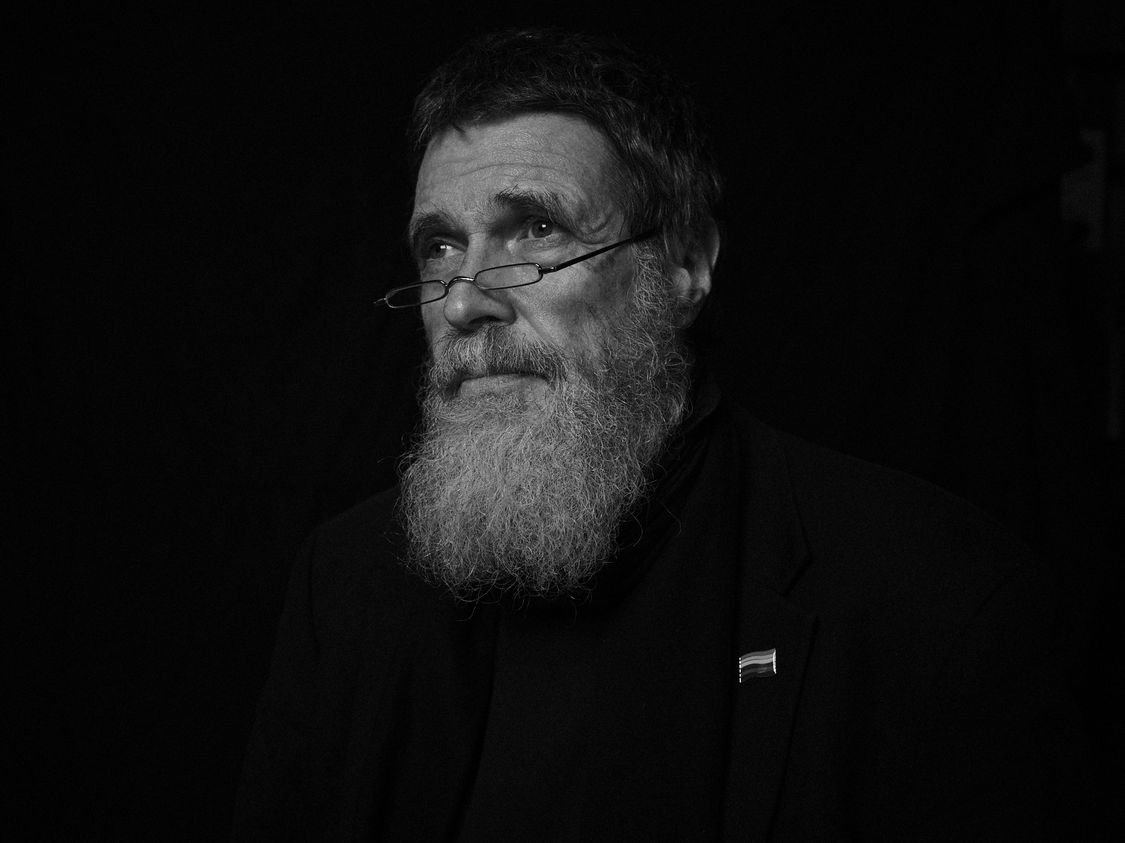
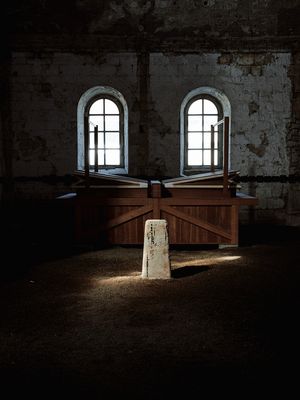
On 4 September 2640, the last notes of what must be the slowest piece of music in the world will sound. Today, this is all still a musical thought experiment that is difficult to fully imagine. It is a projection of notes into the future. “All art wants to be music”, says actor, violinist and painter Armin Mueller-Stahl. The works of the American composer John Cage are art and open new (acoustic) universes. The interpretation of his works is interdisciplinary, and so the origins of the art project lie in an organ symposium in Trossingen.
In 1998, organists, organ builders, musicologists, theologians and philosophers were gathered there. They were discussing the technical, aesthetic and philosophical aspects of Cage’s ORGAN²/ASLSP. The tempo instruction “As SLow aS Possible” raises the question of just how slow this could be. For the experts, the answer lies in Halberstadt: fundamentally, one can think and play the piece infinitely – or at least as long as an organ lasts and as long as there is still peace and musical talent among future generations. Cage in Halberstadt thus represents the longing for infinity and is simultaneously a promise that both humanity and art will endure.
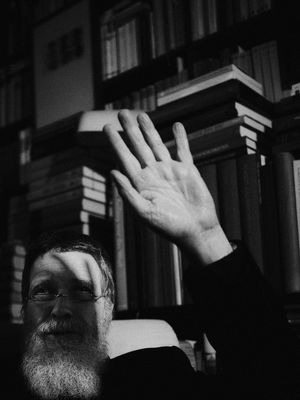
But why exactly is Halberstadt the place of those yearning personalities who brought the John Cage Organ Art Project to life? Firstly, there is the Burchardi Church, which stood empty at the turn of the century. And then one needs to take a journey into the past. In 1361 a very large organ without registers was built in Halberstadt. This organ was located in the cathedral and was probably the first to have a twelve-tone keyboard. This keyboard layout is still used today on keyboard instruments. Halberstadt can thus be viewed as the birthplace of modern music. Mathematically, it is precisely 639 years from 1361 to the start of the project in 2000.
Cage is not simple; understanding him requires reflection. This is precisely what also links his compositions to the subject of administrative sciences. When the organ project started at the turn of the millennium, the founding dean of the Faculty of Administrative Sciences, Prof. Dr Rainer O. Neugebauer, was one of the impulse-givers in Halberstadt. The myth began in the empty Burchardi Church, but first there was: nothing. And that is a state that Rainer O. Neugebauer is familiar with. As founding dean of the Faculty of Administrative Sciences, he is a man for new beginnings.
For over 600 years, St Burchardi was a Cistercian cloister, for another 190 it served as a barn, shed, distillery and pigsty. The Romanic church was rediscovered for this extraordinary project, which has aroused fascination around the world, by the honorary resident of Halberstadt Johann-Peter Hinz. Hinz was a metal sculptor, artist, politician and philanthropist. To honour his commitment and his outstanding role in rebuilding the old centre of Halberstadt, he was awarded the German Cross of Merit. Through his initiative, the support of the town of Halberstadt and the help of many citizens, including Rainer O. Neugebauer, St Burchardi received a new lease on life. The cloister was restored, protected from rain by a new roof, had windows installed and saw the structure of its chapel stabilised so that a bellows based on the first Faber organ could be built.
In September 2001 the concert started, with a pause. Since 2003, the first organ notes have sounded: “As SLow aS Possible”. What started off as a music project has become part of Johann-Peter Hinz’s legacy and the life’s work of Rainer O. Neugebauer. But most of all, it is a symbol of confidence in the future.
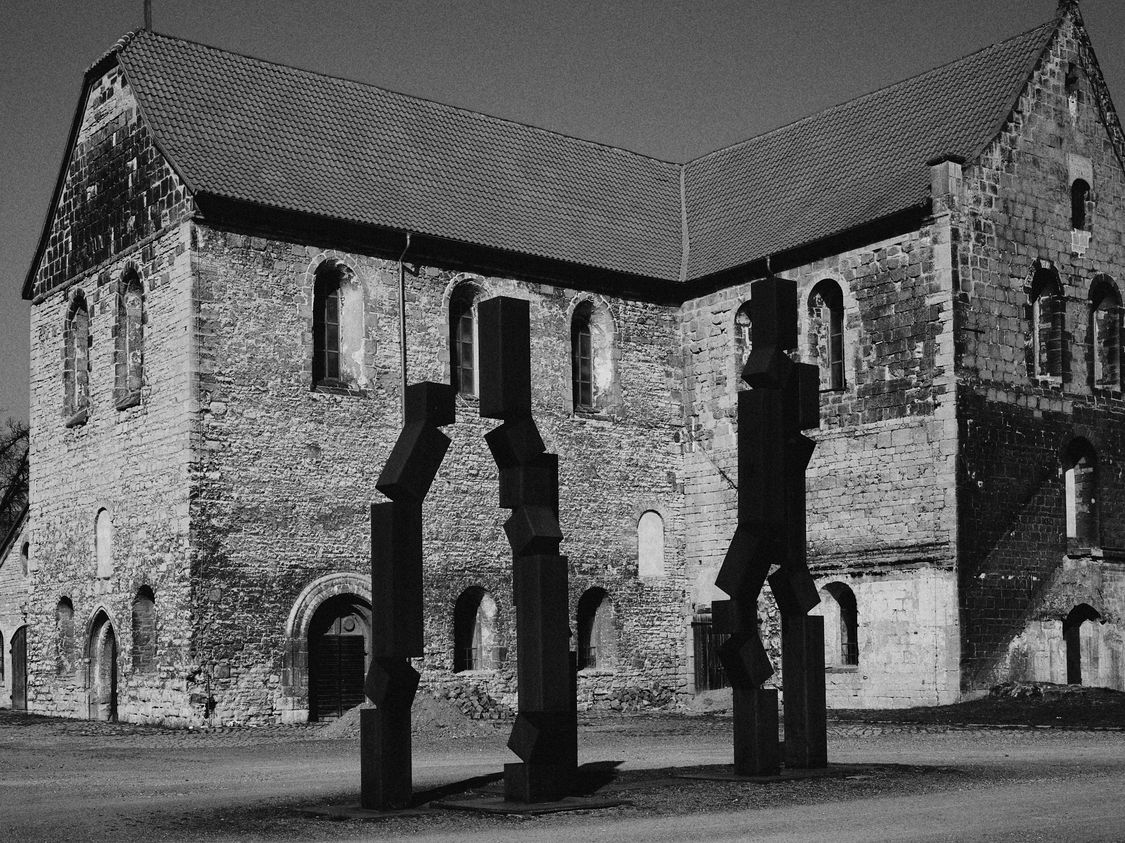
To mark the 20-year celebration of the Faculty of Administrative Sciences in 2018, the John Cage Organ Art Project in Halberstadt was supported through a special donation drive: the sale of 20 limited-edition stamps issued by the faculty, bearing motifs from the University’s home town of Halberstadt, funded the concert for the year 2198. In 2198, the faculty would celebrate its 200th birthday. But even 20 years is a long time.
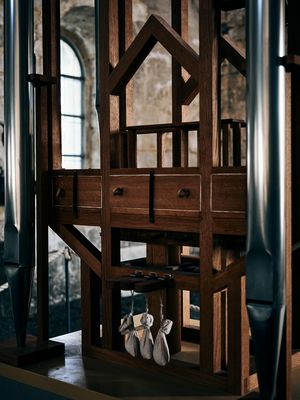
The chair of the board of trustees of the John Cage Organ Foundation Halberstadt, Prof. Dr Rainer O. Neugebauer, reflects on timeless sounds: “How did the John Cage Organ Art Project in Halberstadt get off the ground? Conceived in 1998 at a conference for new organ music in Trossingen, brought to the empty St Burchardi Church through the connection to Peter Hinz, the project started in 2000 – without an actual organ, due to a lack of funds, but with readings, music and dance. One year later it started in earnest with the bellows and a 17-month pause that ended in February 2003 with three tones from an organ with an admirable six pipes. Due to impatience, however, that was 11 months too early. In 2022 the 15th chord change took place; the next one is due on 5 February 2024.
Cage was interested in liberating tones and sounds from all rhetoric and morality. Tones and sounds have no goal, no intention, no meaning. Meaninglessness as a conscious absence of significance and interpretation. The music of John Cage thus augurs a world without any purposes or heteronomous regulations, a utopia of anarchy. ORGAN²/ASLSP by John Cage in Halberstadt, a project consisting of nothing more than time and air, carried by a small group of volunteering enthusiasts, a musical message in a bottle based on the idea of an American anarchist who was marked by Zen Buddhism. A simultaneously radical, irritating, open and extremely gentle work of art, “it’s beyond man’s wit (…), man’s eye hath not heard its like, man’s ear hath not seen its like”. A dream so strangely instigated. An old cloister church as a space for sounds and dreams, which brings to life over 639 years of the past and is filled with the power of Ernst Bloch’s hope for more than 639 years of future."
07.07.2022
Author: Mandy Ebers
Image author: © Tim Bruns
Image rights: © Tim Bruns/Hochschule Harz